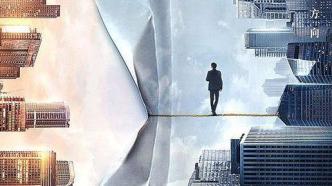
“A City Within a City” is a work of courage.
The three points that impressed me the most were: First, the attitude of facing the industry directly. It was not floating or fantasy, and it vividly dismantled the current financial circle ecology represented by banks;
The second is the way the plot is promoted. This is a work driven by characters, with elements of anti-corruption, spy warfare and romance intertwined and interwoven, and the final gaze into the abyss leaves a lingering aftertaste.
The third is the skill in character creation. The complex aura of the villain penetrates the screen, and the rivalry with the middle-aged uncle is particularly wonderful. Yu Hewei has contributed his most delicate acting skills so far. The image of Zhao Hui, a character who is both good and evil, he created can be said to be "this one" among the rare realistic film and television creations in recent years.

Poster of "A City Within a City"
City within a city: polyphony of themes
From the text level, "City within a City" does not follow the routine of traditional commercial dramas, interpreting the anti-corruption drama into a simple cat-and-mouse game, but gives it the meaning of a tragic fate, giving the whole drama a certain humanistic depth, just like the proposition of "City within a City": "The financial city reflects the industry; the city of human hearts reflects the world."
In a broad sense, the high-rise buildings in Lujiazui are just camera rhetoric, and the focus of the industry drama is on psychological warfare. The three deaths in the play, "the death of President Dai, the death of Su Jianren, and the death of Wu Xianlong", fully outline the turbulent waves in the protagonist's heart. The narrative tension of "attacking the city, defending the city, and breaking the city" is the taut string that pushes the plot to a climax.
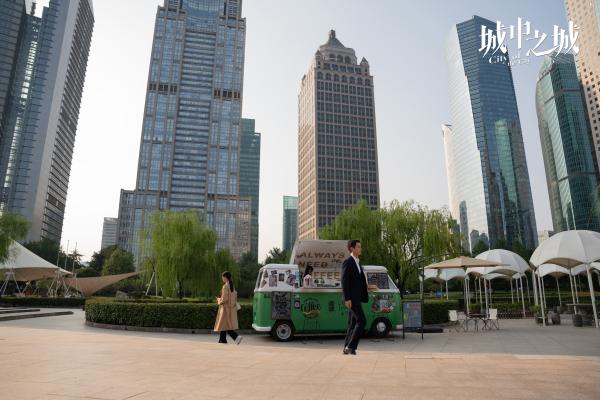
Stills from "A City Within a City"
The whole play is designed with a polyphonic theme of fate for the protagonist, involving three cities.
The first one is about face. As a middle-aged elite and academic master, Zhao Hui believes in "making a living by ability". He has the excellent qualities of a bank manager, calm and introverted, diligent and pragmatic. He was replaced by an airborne leader in the face of public expectations. This is a game of relationships and systems. As the saying goes, "Integrity cannot be insulted", the collapse of values is the first step to inner turmoil.
The second is about character. Faced with workplace crises and repression, Zhao Hui's dark side is released. He fights evil with evil and uses dishonorable means to retaliate against his colleagues and rise to the top. This is an exchange of favors and power, and also the beginning of his rebellion.

Yu Hewei as Zhao Hui
The third is about emotions. Facing the thrilling external hunting, chivalrous and tender-hearted is precisely the weakest line of defense. Loyalty and righteousness become a heavy burden. In the struggle between capital and humanity, the father's love for his daughter is not only a debt, but also a hostage. The elder brothers, classmates and lovers around Zhao Hui all come for money. The ending designed for Zhao Hui in "City within a City" is jumping off the building, which echoes Gu Xing's falling off the bridge. The never-sleeping profit-seeking nature of capital shows the dark power of money; the endless greed of human hearts reveals the truth of moral degeneration.
The concept of "City within a City" obviously goes beyond the subject matter and has an allegorical meaning. Like all classic narratives of financial themes such as the Hollywood movie "Wall Street", it all points to the theme of alienation. The gorgeous and glamorous financial city has a threshold that not everyone can enter, full of human temptations and collisions; the city in people's hearts has invisible defenses and attacks, testing the perseverance and betrayal of personality.
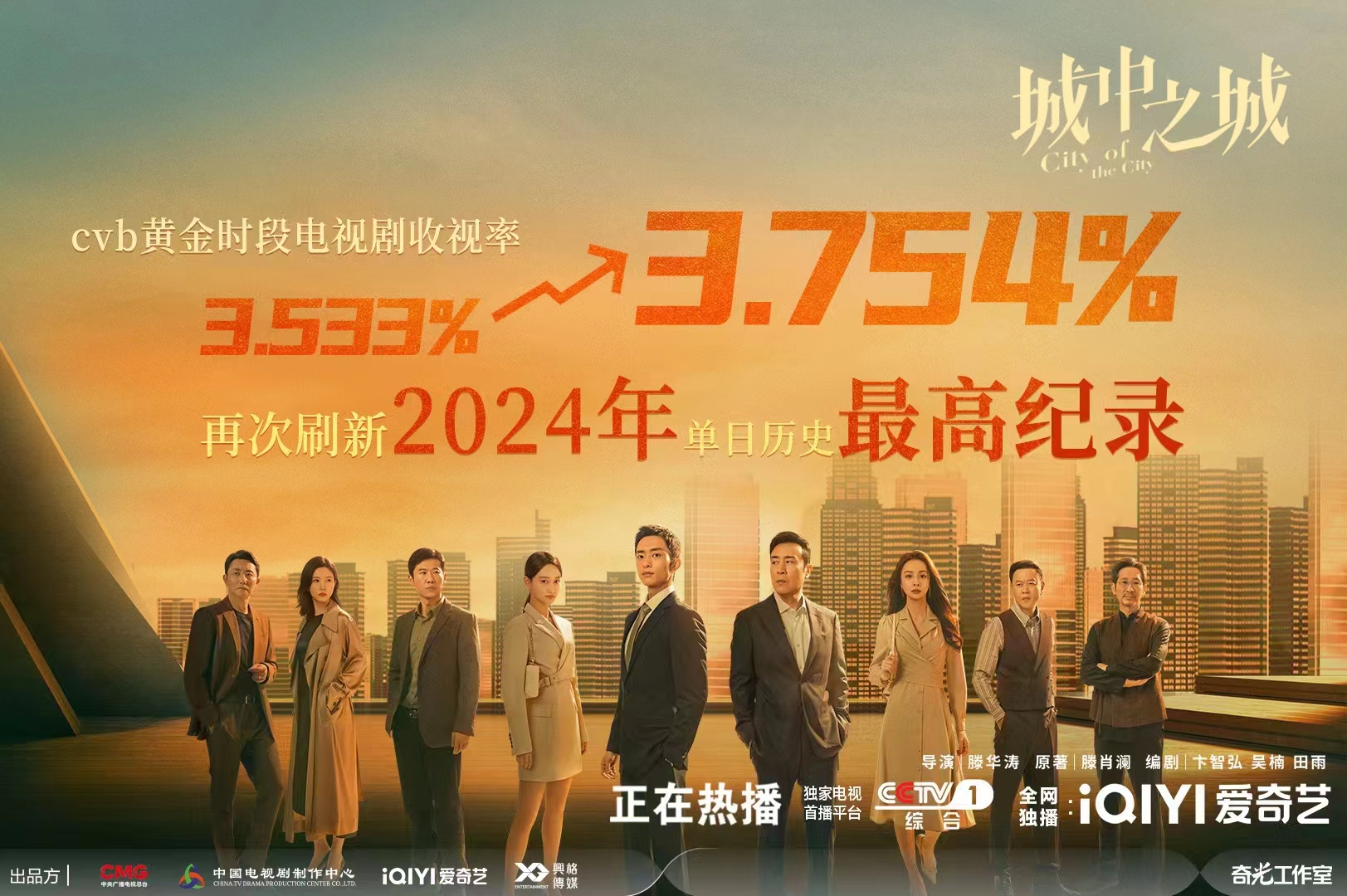
On April 30, the CVB prime-time TV series "The City" had a viewership rating of 3.533%, ranking first in the country and setting a single-day record in 2024
White shirt: the grayscale of the character
The recurring image in "City Within a City" is the white shirt. This is the key to understanding Zhao Hui, the core character of the whole play. The most moving scene at the beginning is that the "Four Sons of Finance" gathered at the funeral of President Dai, and the teacher's wife, Teacher Ouyang, gave a heartfelt exhortation, admonishing the disciples to cherish their feathers. This metaphor of "white shirt" is profound and realistic. The background color of the shirt is a classic torture in financial dramas, and it is also a moral proposition for all bankers.
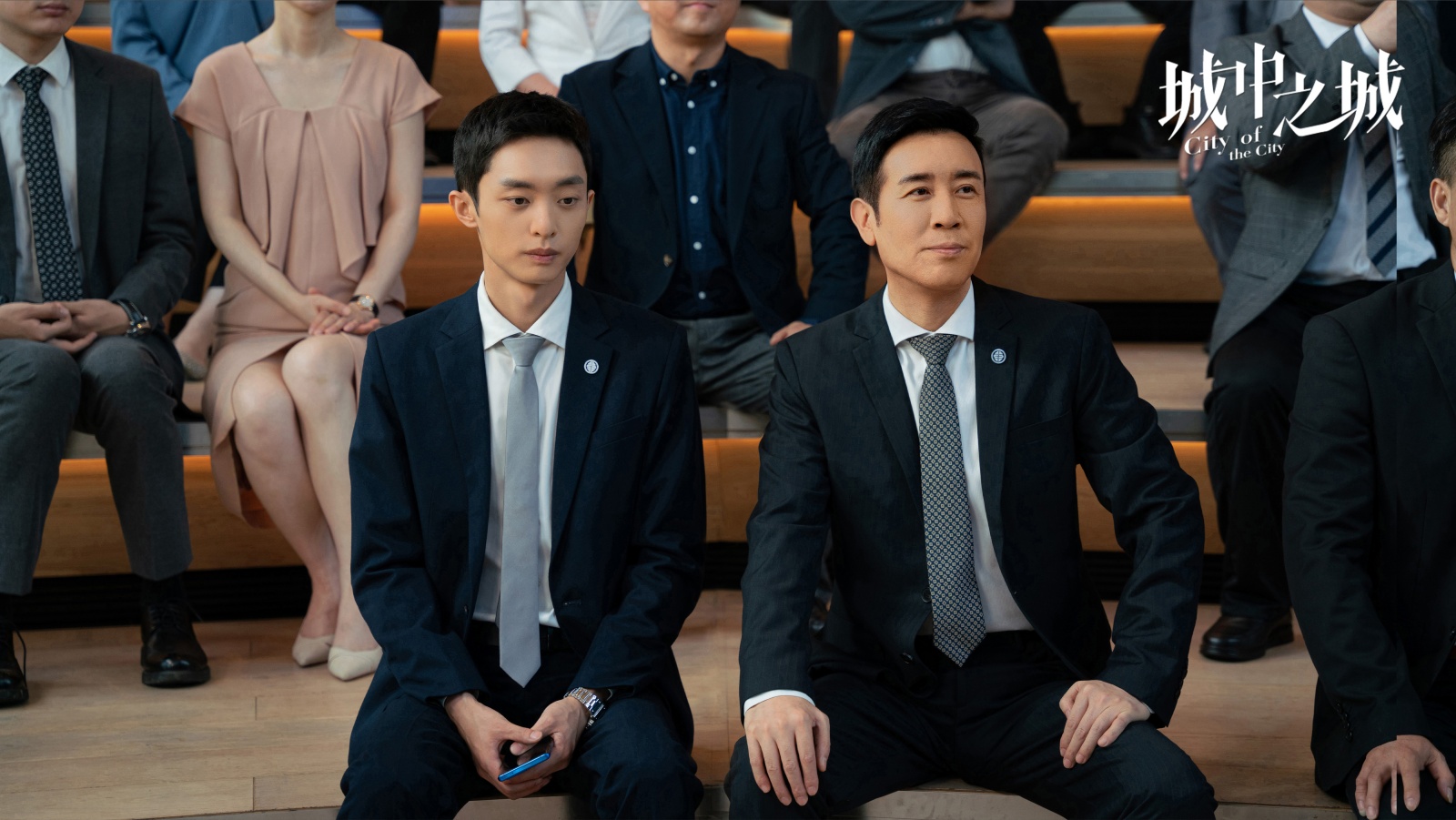
Bai Yufan (left) plays Tao Wuji, Yu Hewei plays Zhao Hui
The breakthrough of the whole play is not in the subject matter, but in the characters. Yu Hewei's interpretation of Zhao Hui in "City Within a City" coincides with a trend in current film and television creation of realistic themes: in the structure of two heroes standing side by side, the brilliance of the "second male lead" often overwhelms the "first male lead", and the grayness of the villain is complex and real, rich and vivid, and becomes a role that can be chewed over and over again.
Zhao Hui's "grey" contains multiple metaphors: it refers to the grey area of the financial industry, the grey emotions of middle-aged uncles, and the grey space in a society of human relationships. The complexity of this role goes beyond the scope of industry dramas, not only referring to the moral dilemmas and ethical challenges in the financial industry, but also exploring the complex relationship between power and belief, wealth and ethics, emotion and responsibility faced by middle-aged elites in the workplace.
"There is no eternal white shirt, only constant washing and whitening." Yu Hewei admitted that what attracted him most about this play was the grayness of the characters. This grayness is actually the scale of creation. As an anti-corruption drama, the sharpness of "City in the City" is self-evident. The widespread nepotism among employees in the banking industry, the tacit professional violations in the industry, and the symbiotic relationship between banks and private financial institutions such as trusts, etc., are all black with white, and white with black. In this environment, it is not a simple lashing out at good and evil, punishing evil and promoting good, but looking at the many spectra of human nature trapped in the city with equal eyes and constantly analyzing them, restoring a complex person in the real world.
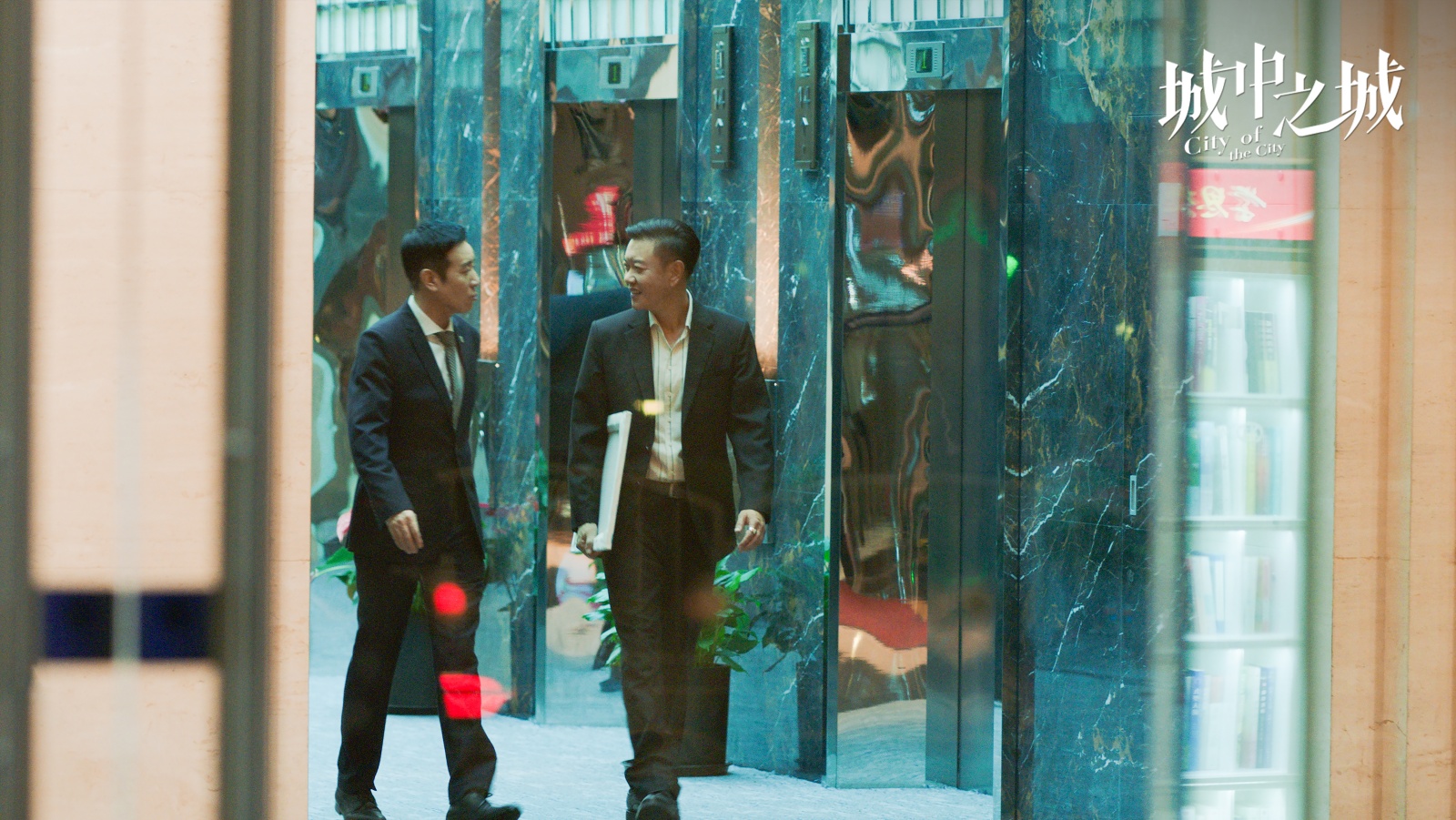
Stills from "A City Within a City"
The biggest challenge for the role of Zhao Hui is "chaos". As the president of a bank on the 43rd floor, during the day, he overlooks the skyline of the financial city, full of passion and ambition; at night, he stands alone in the white moonlight on the balcony, full of worries. Between black and white, the complex entanglement of love (classmate), righteousness (senior brother) and morality (colleague) is played out alternately.
The people around him are authoritarian, greedy, partial, and obsessed with sex. They are like mirrors, all of which are demons. When facing apprentices, how to balance capital interests and regulatory principles? When facing classmates, how to reconcile friendship with workplace rules? When facing big brothers, how to circumvent brotherly morality and legal bottom line? When facing lovers, how to reconcile personal emotions and moral principles? In the end, brothers turn against each other, classmates become enemies, and apprentices betray. Every love and hate is a soul-searching question. Behind the "pain of the flesh" is the conflict, game and tearing of the characters' psychology. This is the most exciting part of "City in the City".
The character creation in realistic works has gotten rid of the binary opposition of "good guy/bad guy", and put the characters in a highly dramatic structure, allowing them to solve the dilemmas based on their own personality traits. The so-called depth of the character is to shape it in a dynamic way, from the relationship between the characters to the inner heart. It is difficult to define because it is the true nature of life.
Wet wipes: the granularity of performance
The highlights of "City in the City" are the characters and actors. In particular, Yu Hewei's performance as Zhao Hui surpassed the original work, shining brilliantly, advancing and retreating with reason, becoming the magnetic pole of the whole play, firmly attracting the audience's attention. Whether it is the calm and composed agent Zhou Yi in "On the Cliff" or the thoughtful businessman Li Zhitian in "Solid as a Rock", Yu Hewei has formed a unique performance style that combines yin and yang: hidden but not revealed, hidden but not obvious. The characters he created always wander between the good and the bad, with typical "three high" characteristics, namely high IQ professional accomplishment, high EQ humanistic feelings and higher psychological quality than ordinary people.
From Li Zhitian to Zhao Hui, Yu Hewei is very good at acting out the character situation of "horror balance". The Zhao Hui he portrayed shuttles between love (daughter), hate (leader), affection (lover) and hatred (classmate). The complexity and concentration of the character is like the palette of middle-aged life. The fine granularity of the performance reflects his ability to control props, body language, expressions and lines in one. Even for a working lunch in the bank restaurant, Yu Hewei can perform the character vividly. Several times, he took the initiative to pass the dishes on the plate to his colleagues at the same table. "This vegetarian chicken, I didn't touch it" became his catchphrase. With one push and one push, the down-to-earth and people-friendly attitude of the big bank president came to the fore.
The three rival scenes left the deepest impression on me. Yu Hewei's performance as Zhao Hui was a hardcore one, whether in terms of rhythm control, emotional release, or capturing details.

Stills from "A City Within a City"
One scene is a "rain scene" in which Zhou Lin is humiliated by her mother-in-law and her son abandons her. She is sad in the rain. In order to comfort this single mother, Zhao Hui holds a small umbrella and accompanies her all the way. Zhou Lin loses control of her emotions and cries. Yu Hewei remains silent, but keeps handing her tissues. The tissues are soaked in tears and wet by the rain. Zhou Lin throws them on the ground. Zhao Hui bends down to pick them up and hands them back. This is the first time the hero and heroine come together. They are reserved and do not have much verbal communication. Zhao Hui conveys sympathy, love and support with wet tissues. This dialogue-free performance leaves a lasting impression.
One is an "office duel". It is the peak confrontation between Zhao Hui and Su Jianren. Zhao Hui knew that Su Jianren had the evidence to kill him. He did not use coercion or bribery, nor did he humble himself. He first took advantage of his old classmate's true nature to play the emotional card, and then used an angry confession to vent his inner grievances, controlling the whole process, and finally made the other party cry and escape unscathed. In this battle of the gods, Yu Hewei used the wisdom of "conquering the enemy without fighting" and interpreted the momentum of burning the boats with a calm and composed manner. The explosiveness of the lines and the control of the expression cooperated with each other to create the image of a gentleman with "thunder in the chest and calm face".

Wang Xiao (left) as Miao Che
One scene is "Drinking with Miao Che". Zhao Hui and Miao Che, old classmates and rivals, have fought for several times and finally reached the point where the grudge in their hearts could not be resolved. In the small restaurant, Zhao Hui took the initiative to stand up and open his hands to play finger-guessing until he asked for wine. The two were on the subway. Zhao Hui stretched out his hand first to shake hands, but Miao Che did not accept it. The two hugged each other instead. Zhao Hui was in a trance at the entrance and exit. The two went in opposite directions. This scene was like a hint of fate. At this moment, words are pale. Yu Hewei and Wang Xiao only rely on a pair of hands, from fist-guessing, asking for handshakes to hugging, conveying endless meanings.
It should be said that from text to image, the performance has really enhanced the color of "City in the City". Represented by Yu Hewei, a group of male characters created in the whole play, such as Wang Xiao's Miao Che, Feng Jiayi's Su Jianren, Tu Songyan's Xie Zhiyuan and Wang Jinsong's Wu Xianlong, have left a deep impression on people. In the field of professional drama creation, middle-aged people obviously have irreplaceable advantages. How to polish diverse, rich and complex characters and record the rapidly changing times and lives reflects a change in the character creation of current realistic film and television dramas. After all, exploring the brightness and subtlety of human nature is the eternal sand of time.

